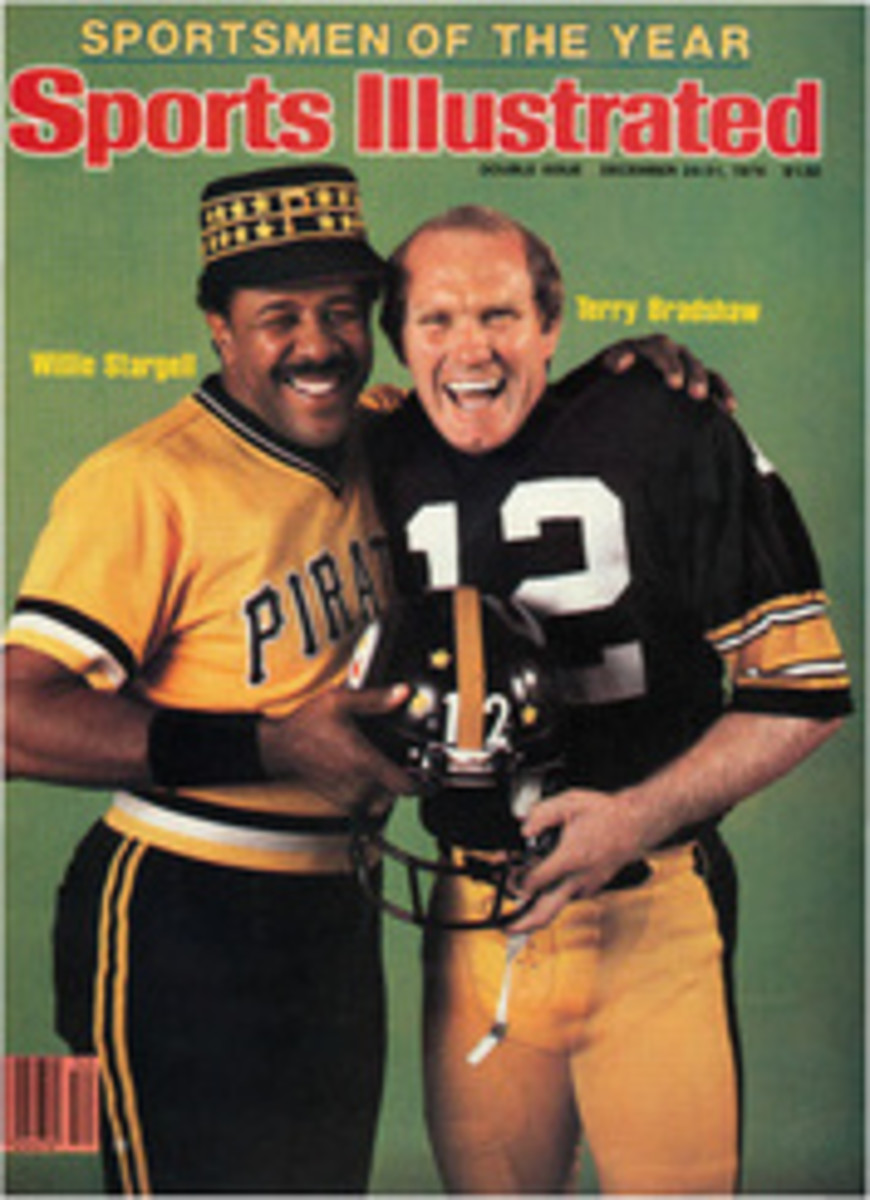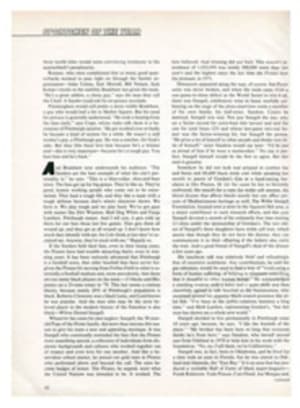
THE U.S. ARMY'S CAMEL CORPS MIGHT HAVE SUCCEEDED BUT FOR MULISH MEN
If Jefferson Davis had had his way, the U.S. Cavalry would have pursued Comanches on camelback. The Indians, riding mustangs that initially would have widely outdistanced the camels, would have galloped confidently northward into the empty plains. But their sense of security would've been short-lived. Camels, lurching steadily at a constant speed, can travel much farther in a day than horses can. Tireless, relentless and ridden by resolute though slightly seasick soldiers, they would have overtaken the Indians every time.
No such chase ever took place in the Old West. But it was supposed to have happened, back before the Civil War, when Davis was Secretary of War under President Pierce. For years various people had been advocating camels as the solution to the Army's transport problems in the Southwestern deserts, where horses and mules tended to die of thirst between water holes and there was very little grass for grazing.
So under Davis' aegis an experiment was begun in 1855. Two shiploads of camels—75 in all—were brought from Egypt and Turkey to Indianola, Texas and marched inland to Camp Verde near Kerrville. There a khan—a kind of corral for camels, with walls 16 feet high—was built. Quarters went up for officers and enlisted men, as well as huts for a handful of Turks and Arabs who came along to teach camel-handling to the Americans.
The man in charge of the experiment was Major Henry Wayne, a conscientious officer who faced some curious problems. Camels were not universally popular in Texas. Wherever they appeared, they caused panic among other animals. Horses and mules ran away, dragging buggies and wagons behind them. Cattle stampeded. Dogs barked hysterically.
And while gawking at camels became something of an entertainment for the general public, what the animals did on roads and city streets wasn't funny. They ejected spital from one end and excrement from the other explosively and without warning on anyone who happened to be near. Their frequent sneezes all but made the earth shake. They showed alarm by blowing a bloody bladderlike mass out of their mouths. Only regular washing and currying kept their body odor from becoming a stench. In the mating season the males bellowed and tried to kill each other.
If these characteristics were unpleasant to civilians, they were downright loathsome to the enlisted men who had been taken away from their beloved mules and put to currying, feeding, loading and driving camels. Major Wayne, as a staff officer, had no direct authority over the soldiers who worked with the animals. Only their commanding officer was empowered to give them orders, and he was a rigid Army type whose warmest feeling for the camels was contempt. Sometimes Major Wayne's wishes got transmitted and carried out, and sometimes they didn't, which added to the general confusion.
The Turks and Arabs were troublesome, too. All of them had claimed a thorough knowledge of camels, but few possessed it. They had been seasick and useless on the voyage to Texas, and some of them were often drunk and useless after getting there. In addition, they treated the camels' ailments with bizarre and ineffective folk remedies.
Still, considerable progress was made. The thing that worked best about the camel experiment was the camels. They smelled bad all right, but they could carry huge loads, and they were as tough as jerky. On 60-mile supply runs between Camp Verde and San Antonio they proved cheaper, faster and more efficient than mule-drawn wagon trains. They could travel easily through mud that bogged the wagons down, and they had not yet been taken into desert country, where their advantages over mules would be even greater.
At the camp, when a camel knelt and was loaded with four bales of hay, any one of which would have been too much for a mule, bystanders—there were always plenty of these—hooted and swore that the beast couldn't get to its feet under such weight. But it rose, and marched away at Wayne's command. Performances of this kind won respect from Texans, expecially once their livestock gradually ceased to stampede at the sight of a camel. A woman in Victoria, Texas knitted a pair of socks from camel-pile and sent it to President Pierce. He acknowledged the gift with a silver mug bearing his name.
In the first big test 25 camels were sent across the Southwestern deserts to California. It was a five-month trip also involving mules, wagons, horses, 44 men and several dogs. Its leader was Lieutenant Edward Fitzgerald Beale, a sailor, rancher, explorer, friend of Kit Carson and holder of many government offices.
The camels, even though overloaded with corn, never looked back. As the horses and mules ate the corn—the camels didn't get any—the camels' performances got better and better. They lived off the desert, eating the thorny mesquite and bitter greasewood that the other pack animals wouldn't touch, and they could go for days without water. The dogs grew footsore on the rocks and whimpered to be taken aboard the wagons, but the camels plodded on without damage to their unshod feet and without complaint. They passed through Albuquerque and the place that was to become Flagstaff, Ariz. The camels swam the Colorado River into California, though Beale had thought they might refuse to. Camels feared water, he had been told. Some of the horses and mules were carried away by the current and drowned, but all of the camels made it.
In his long report to John B. Floyd, who had replaced Davis as Secretary of War, Beale wrote, "This noble and useful brute has spared us many hardships.... I am convinced of their entire adaptation and usefulness in the exploration of the wilderness." Floyd recommended to Congress that the Army buy 1,000 camels, a request that was never acted upon.
Two more long experimental journeys were made from Camp Verde, both of them in the deserts of western Texas, including what is now Big Bend National Park. The water holes were often as many as 110 miles apart. On one march the expedition reached the point of no return, so far as water was concerned, and didn't know where to find the next spring. The men and mules suffered horribly and would have died except for small amounts of water that the camels carried—and which they drank none of. The camels were unaffected by rattlesnake bites. They ate sagebrush, thistles and creosote bush and went three days in the summer desert without drinking. (A camel does not store water. It stores fat in its hump, and this is converted to energy as needed. Nearly all the Army's camels were one-humped Arabians, but some were shaggy two-humped Bactrians.)
Local businessmen eyed the camels and saw a good thing. "We look forward to the time when vast herds of these animals will be in use in our state," said a San Antonio newspaper. Several dozer Asian camels were imported from China to San Francisco. More Arabians were brought to Galveston from the Near East The owners were civilians who believed they had found an ideal new beast of bur den, cheap to feed and all but indestructible. But the camels were mistreated and overworked, and none of the enterprise prospered.
Beale was transferred East in the early 1860s, ending the Army's active experimentation with camels. The Confederate soldiers who took over Camp Verde in 1861 made little use of the camels during the Civil War. Those that had been marched to California were never marched back. They remained at Fort Tejon, near Bakersfield, packing supplies for the Army on short hauls.
The Camel Corps was officially disbanded in 1863, but it wasn't the camels' fault. After the Civil War the frontier quickly disappeared and railroads pushed across the Southwest. Only a few men ever believed in the camels or took them seriously. Many Army officers opposed them with closed minds—as others would oppose military aircraft 70 years later. The Camel Corps had been started by Jefferson Davis, that dirty rebel who later became President of the Confederacy, and that was a mark against it, too.
In the late 1860s, the Army sold both the Texas and the California herds, including many young camels born in the U.S. They were bought by carnivals, circuses, mining operations and even a few people who just wanted to own a camel. Some of them were worked to death hauling salt in Nevada. Others, abandoned in the deserts of Texas and Arizona, thrived and reproduced there until settlers moved in. They shot at the camels for fun, as men shoot at bottles and cans, and soon killed them off.
A few of the Moslem camel handlers went home. Others died in obscurity. An Arab named Hadji Ali accompanied the Beale expedition to California. He was known as Hi Jolly, a crude Americanization of his name. He became a wandering prospector in the Mojave and Sonoran deserts and died at Quartzsite, Ariz. in 1903 after nearly 50 years in the U.S. Near Interstate 10, Arizona has erected a monument to Hi Jolly's memory. It is a stone pyramid with a metal cutout of a camel on top of it.
Another of the camel drivers, a Turk named Elias, drifted from California into northern Mexico and married a Yaqui Indian. One of his sons, Plutarco Elias Calles, became President of Mexico in 1924.
A little traveling show came to San Antonio in 1903. With it was an Elderly camel that bore the U.S. Army brand. Camels live more than half a century; and this one had probably been born at the Camp Verde khan in the 1850s. Local newspapers ran stories, and people came to see the old camel and its brand. Then the little circus left town, and with its departure ends the recorded history of the U.S. Army's camels in Texas.
ILLUSTRATION

